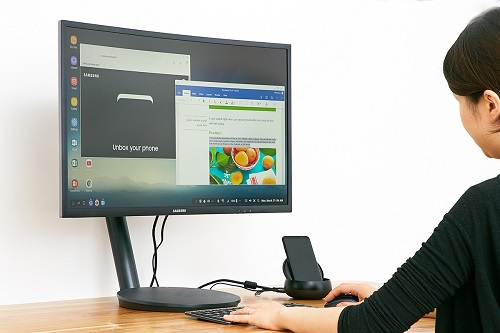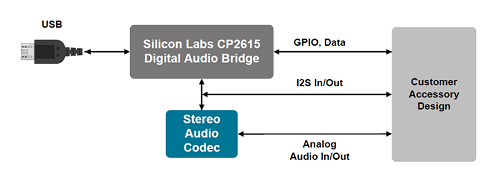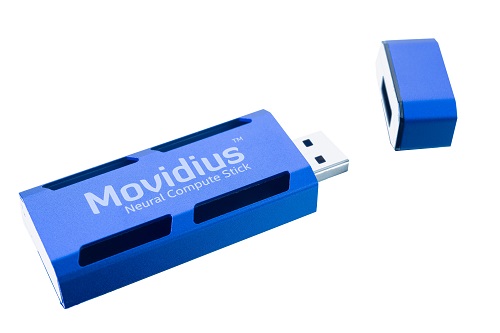By Majeed Ahmad, contributing editor
The humble USB has come a long way from its origin of a computer peripheral, and its evolution has been a remarkable tech journey. But USB’s unprecedented growth also entails different bandwidths, connector types, and power levels.
Now the advent of the USB Type-C standard is taking the already-complex interface electronics to a whole new level. This article takes a look at the promising new areas of USB Type-C growth and shows how its compact form factor is now branching into new technology frontiers.
Let’s start with power delivery, which is making most headlines for taking power draw to as high as 100 W so that it could charge even notebook computers.
USB power delivery
The adoption of the USB power delivery (USB-PD) feature is a key trend in AC adapters and power supplies, power hubs, docking stations, smart plugs, and displays. It’s carried out independently through a dedicated configuration channel (CC) to ensure a safe and efficient power delivery.
Moreover, the new controller chips are allowing the USB ports to incorporate authentication via highly tamper-resistant security technologies. These USB controllers also come with built-in protection against overvoltage, and they perform this function without external voltage regulator or CPU involvement.
The USB-PD 3.0 specification enables an end-to-end power delivery and charging solution for laptops and other portable devices. Beyond power delivery and smart charging, the USB Type-C solutions are taking this plug-and-play connectivity mechanism to a variety of peripheral devices such as a monitor, keyboard, and mouse.
Samsung’s DeX Station is a key example. It allows users to dock their Galaxy S8 and S8+ smartphones via a USB Type-C port and use apps, review documents, and check notifications in a desktop environment (Fig. 1 ). Fig. 1: Cypress Semiconductor’s USB chips power the Samsung DeX Station dock design that creates a smartphone-as-a-PC experience.
Fig. 1: Cypress Semiconductor’s USB chips power the Samsung DeX Station dock design that creates a smartphone-as-a-PC experience.
Digital audio accessories
The USB connectivity is now branching into digital audio applications while serving a myriad of multimedia devices such as headphones, headsets, speakers, MP3 accessories, navigation systems, and point-of-sale (POS) terminals.
Digital audio is also crucial because new smartphone designs are replacing analog headphone jacks with a single USB connector that supports both charging and USB connectivity. However, low-cost dongles, which interface analog jack to USB-C-to-micro-USB adapter, allow consumers to keep using their existing headphones.
Silicon Labs has recently unveiled an audio bridge chip for transferring digital audio data between USB and integrated inter-IC sound (I2 S) interface (Fig. 2 ). The I2 S is a serial bus interface for connecting digital audio devices. Fig. 2: Silicon Lab’s CP2615 audio bridge doesn’t require driver installation and can operate with any USB host that supports USB Audio Class 1.0.
Fig. 2: Silicon Lab’s CP2615 audio bridge doesn’t require driver installation and can operate with any USB host that supports USB Audio Class 1.0.
Apart from the I2 S audio interface, the single-chip CP2615 audio bridge includes a USB 2.0 controller, USB transceiver, on-chip oscillator, I2 C control interface, and embedded flash memory for storing device configurations.
Silicon Labs claims that it’s a drop-in connectivity solution that doesn’t require USB audio knowledge or protocol expertise. Thus, it frees designers from the complexities of firmware development.
The Austin, Texas-based chipmaker is targeting this single-chip solution at low-end and mid-market headphones requiring a 48-kHz sampling rate.
Handling video traffic
High-definition content and 4K video are the next frontier for USB Type-C connector designs. Take the case of Intel’s USB 3 dongle that claims to handle deep neural network (DNN) applications. Here, Intel has put to work the computer vision technology that it recently acquired from Movidius.
Movidius Neural Compute Stick requires data to be loaded through the USB interface. And the stick can be used with any USB 3.0 platform, including Raspberry PI and personal computers that usually come with an attached camera. Fig. 3: Intel calls its USB 3 dongle a self-contained artificial intelligence accelerator.
Fig. 3: Intel calls its USB 3 dongle a self-contained artificial intelligence accelerator.
The dongle loads data via the USB interface to aid applications like object recognition and 3D mapping in devices such as flight control and drones. A drone camera, for example, can capture the scene and track objects while streaming the video data through the USB interface.
However, the fact that a USB Type-C connector is going to carry power, audio, and video traffic to a single port also makes it a complex undertaking. And for that, EDA firms like Synopsys are introducing validated IP blocks, verification suites, and test cases.
USB design tools
Chipmakers are implementing high-performance I/O building blocks necessary to ensure that a single USB/DisplayPort interface can connect to a USB Type-C device. That includes the controller, PHY, verification IP, and test suites for the latest USB specifications.
Take, for instance, the USB 3.2 specification that adds new hosts and devices to USB Type-C connections in order to create multi-lane solutions. It allows up to two lanes of 5 Gbps or two lanes of 10 Gbps, thus doubling the data rate over USB Type-C cables.
Synopsys has made available the verification IP for USB 3.2 hosts and devices; however, it continues to support the existing SuperSpeed USB physical layer data rates and encoding techniques.
The verification IP includes extensive protocol checks and integration with Synopsys Verdi protocol-aware debug. Furthermore, the EDA house is complementing its verification IP for USB 3.2 designs with the availability of the UVM source code test suite, which features early support for the USB 3.2 standard.
Conclusion
What we see now are USB chips that continue to incorporate more features in highly integrated system-on-chip (SoC) designs while aiming to lower the design complexity with complementary tools. And there are more design tools available now to help developers quickly configure the USB parameters.
For instance, the audio bridge chip mentioned earlier in this article comes with the GUI-based Xpress Configurator tool. It allows developers to implement digital audio in three steps: Connect the bridge chip, configure the USB and audio parameters, and program the device.
Advertisement
Learn more about Electronic Products Magazine





